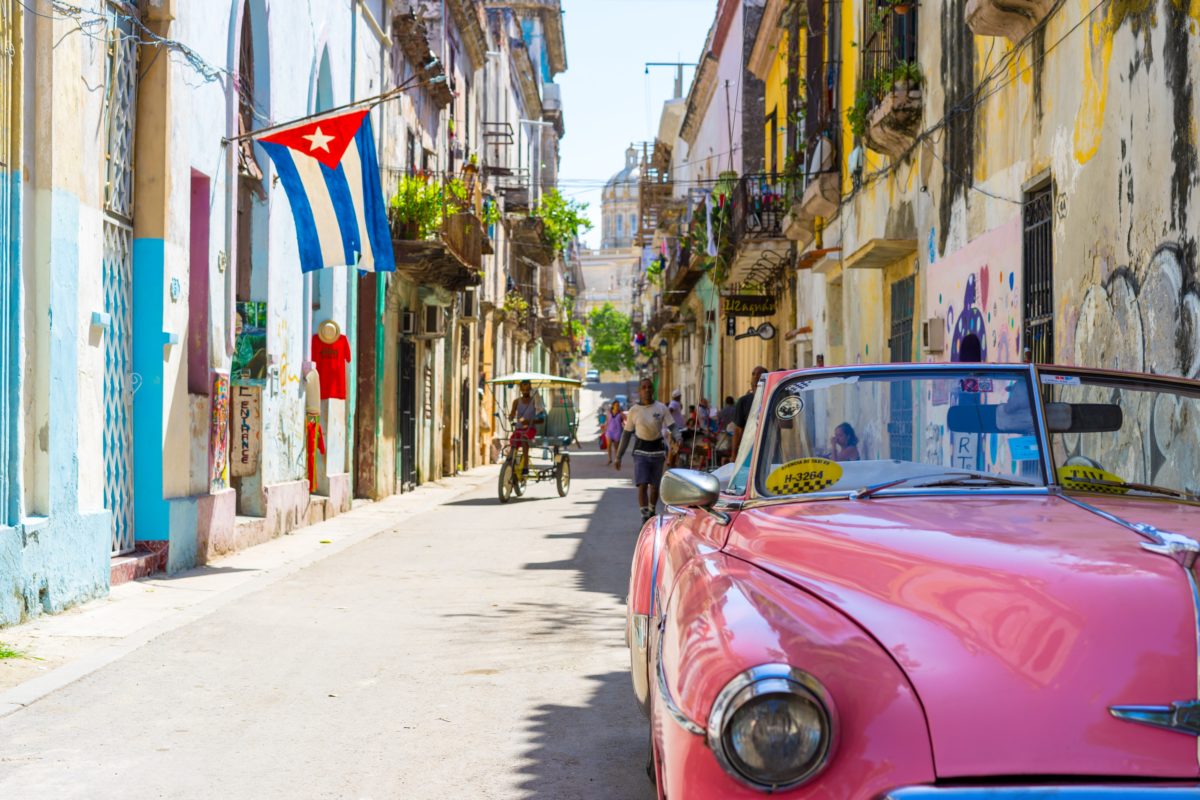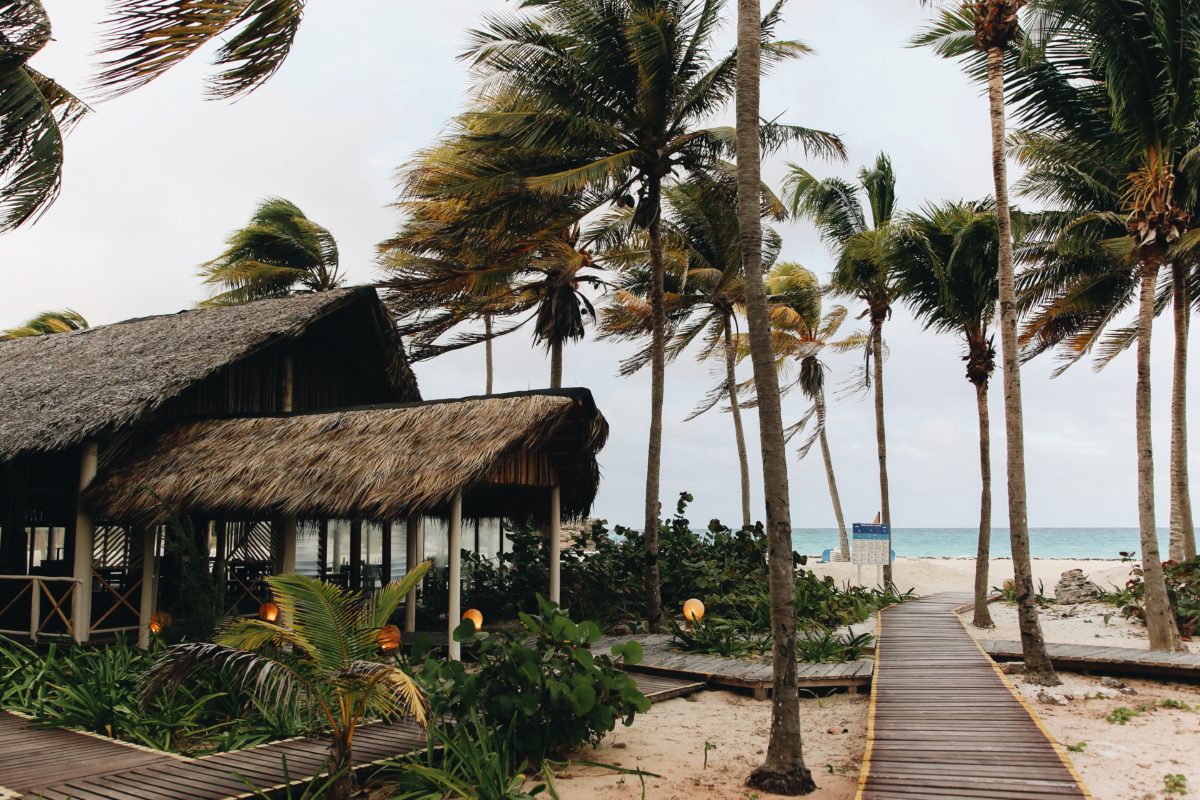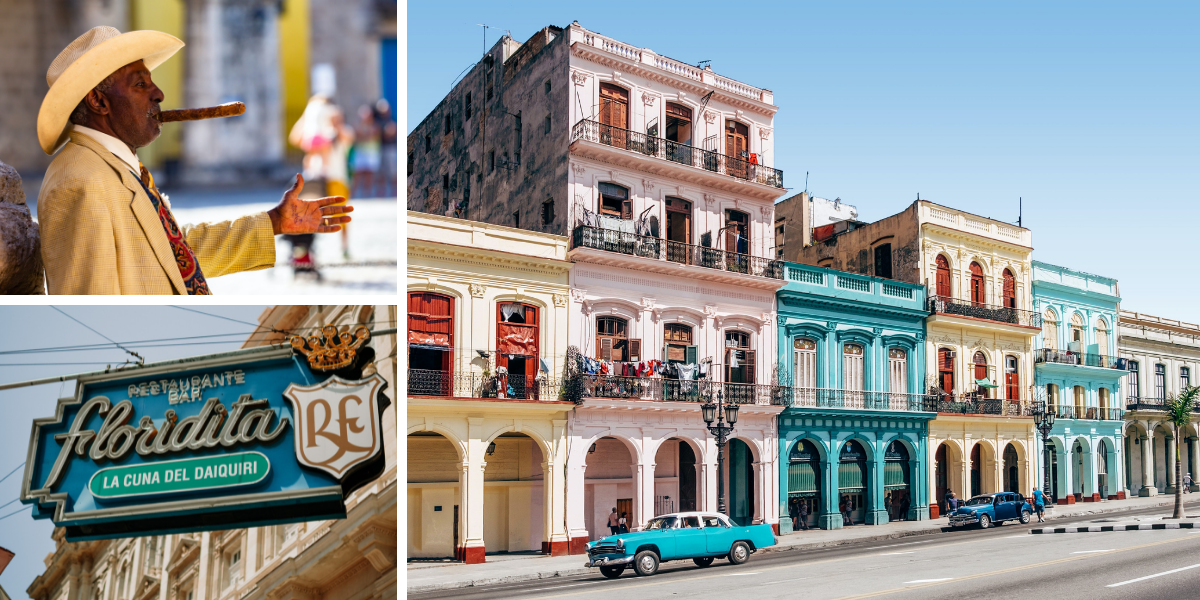Let’s Visit: Cuba!
Cuba may not be the first thing you always think of when considering a destination vacation, but you’d seriously miss out should you brush it off from the start. Cuba is a fantastic place to visit, especially when life feels a little too hectic and you desperately need some time and somewhere to wind down.

With beaches beyond comprehension, unbeatable food and music, countless fun cities to explore, entertainment up to your ears, and some of the genuinely nicest (and coolest!) people you’ve ever met, make Cuba an absolute must-visit in 2021 and beyond. Looking for a guide to help you along? Keep reading to know what to expect, where to stay, and what you should be doing during your time in Cuba.
Before You Go
Whether you’re planning on staying for a few days, a month plus, or somewhere in-between, it’s always good to have your head on straight before you’ve hopped on the plane. You’re going to a (probably) distant, unfamiliar place and should know what to expect. Here are some of the big facts and considerations. Keep them in mind long before you land, and you’ll find your trip will run much more smoothly.

- Cuba operates from two main currencies. Here in the US, the dollar reigns supreme. But in Cuba? You should expect to see two main currencies: the Cuban convertible peso (CUC) and the Cuban peso (CUP). For those confused, the former of these two is pretty much the official tourist currency while the latter is what you’ll see the locals toting around.
Make sure to first exchange your dollars for euros, then exchange that to CUC. Why? Because Cuba’s government charges a 10% fee on all US cash conversion. Use the euro, and that won’t be a problem. Also, it’s true that the banking situation in Cuba and our government embargoes are always evolving. However, it’s still unlikely you’ll be able to rely on using a debit card over there. Keep this in mind and plan ahead.
- The water isn’t the safest. The locals can handle it no problem, but those of us from outside Cuba’s bounds aren’t quite as hardy. Our systems just aren’t used to the water, meaning you should avoid it if you don’t want any uncomfortable stomach troubles. Opt instead for bottled or invest in a LifeStraw if you’re really committed. Just whatever you do, stay away from the tap.
- Spanish is the main spoken language. Some of the locals around you might know enough English to get by, but we wouldn’t rely on it if we were you. You could easily get into a sticky situation not being able to chat with the locals. There’s a straightforward fix, though. Learn some Spanish! It’s the national language, meaning knowing the basics will make your life in Cuba a whole lot easier. Be aware, however. Like with any language, regional dialects and slang vary from place to place, and the Cuban accent has a tendency to be incredibly thick. It likely won’t sound the same as what you’d learn in school or online. A little research should be done to get you more acclimated to this so that there are no breakdowns in communication while you’re there.
- Wi-Fi will be hit or miss. Collectively, we love our Wi-Fi. It’s amazingly convenient, particularly when you’re on a trip. A quick Google search or message to someone you know who has already visited can key you in on everything from the best places to eat to the areas to avoid to the roads you should take. Great stuff, but be warned: that’ll probably be spotty. Plan for that. Do your Googling ahead of time and thoroughly read this guide before you ever pack your bags.
Always save your essential travel documents offline and choose physical tools for all your planning needs! Here at the Mapshop, we’ve got it all – Cuban folding travel maps, guides to Havana/central Cuba, NGA charts, and more. Purchase what you need, and it’ll seriously be a lifesaver whenever you find internet access lacking.
- Cuba is actually rather safe. Travel is incredible, but people have good reason to often be on high alert. Many countries have higher rates of crime than where you’re from, and less savory folks may jump at the opportunity to take advantage of unsuspecting tourists. Luckily, Cuba’s a little different.
It’s actually relatively safe thanks to low crime numbers and theft. That’s not to say you should walk around without a care, but a nice dinner out at night probably won’t hurt anything. The bigger concern is hustlers in tourist traps. Being smart about scams and an aware, savvy traveler will go a long way to protecting yourself.
Where to Stay
Cuba is honestly one of those places that’s beautiful to visit year-round. However, considering the fact that it has a tropical climate, most people find a visit especially appealing during the cool and dreary fall and winter months. Visitors from nearly every cold location you can think of love to flock to the pleasantly warm and sunny island, exchanging snow and ice for something a lot more comfortable.
Find yourself part of the club? Just don’t forget that Cuba’s rainy seasons run somewhere from the beginning of May to the middle of October. Hurricane season also broadly encompasses this, running from June to November – not exactly ideal if you want to make it in time for Carnaval in July. So, if you’re going to escape your state or country before December hits, always watch the weather in advance and ensure you have backup plans in place should a storm hit.

Of course, your plans should encompass considerably more than just when you should visit. You’ll also need to decide on where you’re going to stay once your plane finally touches down in the land of fun, food, and dance. You’ve got a host of choices, including fancy hotels, budget hostels, and resorts, but our recommendation is actually to avoid the whole lot. Instead, what you want is to lean more towards casas particulares.
These are essentially local guesthouses, private homes that rent out rooms to give travelers a more cost-efficient and more authentic local experience. Generally, they cost around ten bucks to thirty USD per person and are largely regarded as the smartest accommodation options as casas are more affordable, and hosts are often incredibly helpful. Need a ride? A recommendation on must-see attractions? Guidance on where the locals hang? They’ll likely hook you up.
Experiences That Shouldn't Be Missed
Cuba is a place best explored slowly and thoroughly. Even some of the place’s smaller towns and less crowded spaces are rich with things to see, do, eat, and experience. It’s easy to miss something, especially whenever you’re on a tight time crunch. No worries, though. Here’s a quick list of some of the things that should immediately be moved to the top of your schedule. Check off a few and you’ll have some amazing stories and memories to bring back with you to the States, UK, or wherever else you normally reside.

- Head on over to Varadero’s famous white beaches for fun in the sun.
- Have a daiquiri at Havana’s Floridita – it was invented there!
- For seafood fans, head on over to the restaurants near the coast. You’ll find incredible fish, lobster, shrimp, and crab for only about $7 per person.
- Go see Salvador Gonzalez’s quirky street art in Callejón de Hamel in Centro Havana.
- Book a tour at a genuine Cuban cigar shop.
- Scuba dive at María la Gorda. You’ll see some amazing sea life and some of the clearest waters you’ll ever get to experience.
- Pass the time at Trinidad’s Casa de la Músíca. The music flows freely, and the locals love interacting with tourists. They’ll be sure to show you a great time that you’ll be talking about years down the line.
- Grab a cone at Coppelia Ice Cream. It’s practically a Cuban institution!

